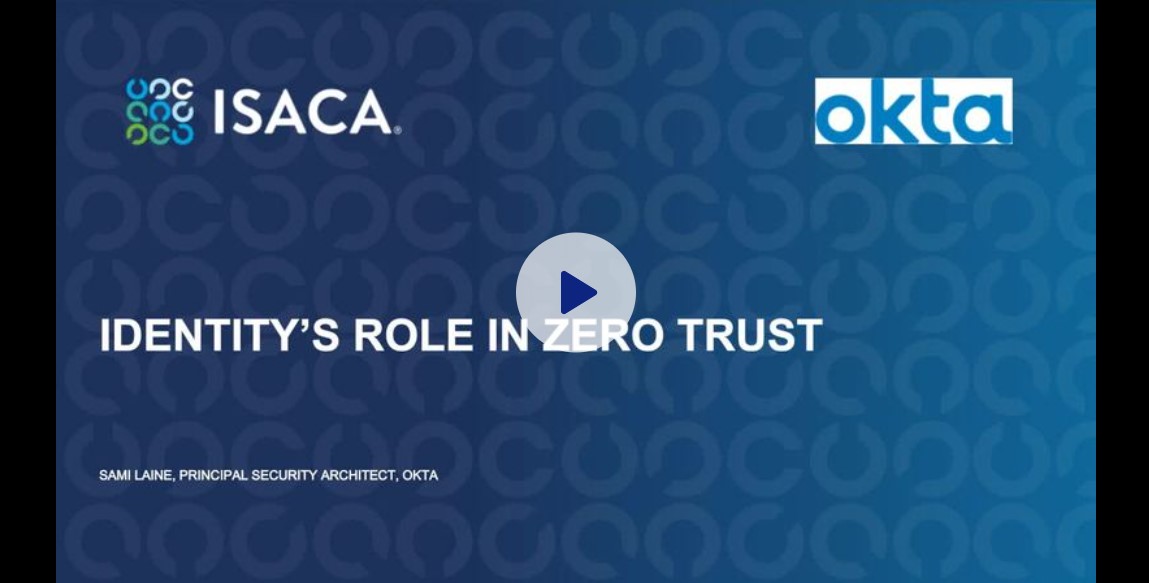A month in the life of a social engineer – part one
With hackers finding more ingenious ways to exploit human flaws, we get inside the planning stages of a social engineering attack


With social engineering set to plague 2022, understanding cyber criminals’ tactics, and the mistakes they make, might help us defend against their efforts. This is the first entry in a four-part series, published weekly, exploring how social engineers plan their attacks – from identifying targets to exploitation.
Human beings are hard-wired to trust, help, connect and impress. It's what makes us so valuable to your organisation. These traits, unfortunately, also make humans your fatal flaw.
Social engineering is the art of tricking people into doing something that's in your interests and not in your victims’, with a view to gathering information or achieving an action, such as letting you into their house. It's a criminal tactic as old as time, and a perfect fit for today's networked workplace.
Cyber criminals have utilised social engineering effectively through the years, turning the best employees into unwitting accomplices in security breaches. The consequence, warn experts, has been a surge in active threats to critical and sensitive systems.
Know thy enemy
"There's a tidal wave of it coming," former cyber criminal and We Fight Fraud founder, Tony Sales, tells IT Pro. "National infrastructure is at risk because of social engineering. I think the whole country is at risk without even realising it."
Figures bear out this alarming language, with Verizon finding 85% of data breaches involve attempts to prey on human weaknesses. Purplesec claims, meanwhile, 98% of attacks rely on some form of social engineering.

Tony Sales is a former fraudster and founder of We Fight Fraud
Get the ITPro daily newsletter
Sign up today and you will receive a free copy of our Future Focus 2025 report - the leading guidance on AI, cybersecurity and other IT challenges as per 700+ senior executives
It's easy to see why cyber criminals find social engineering so effective; it takes much less effort and ingenuity to con an individual into giving you access to company computers than hacking through corporate code. The poor weaponised employee has no idea what's going on.
If you're to stand any chance of avoiding this threat, you must know your enemy and recognise their tactics. "Unless you teach your staff about the human element, you are going to become a victim," says Sales, whose 30-year criminal career included identity fraud and two stints in prison. "If you do train them, though, you'll force the attackers to look elsewhere, at your less secure competitors." You must try, therefore, to get inside a social engineer’s heads before they can get inside yours.
The attack plan
Social engineering is, by its nature, a stealthy, hard-to-spot, compromising tactic that plays a role in most multi-stage attacks that demand long-term infiltration and observation. Usually, the attacker will use a combination of steps to achieve their aims. These can be as simple as tricking someone into revealing their system password (not difficult, given how many of us still use our pets' names and football teams as passwords), or as sophisticated as securing a job with a particular organisation in order to infiltrate its global security networks. Edward Snowden, in a way, did both.
Long before an ambitious social engineer can get stuck into spoofing finance staff with AI deepfakes pretending to be the CFO, however, they must decide how their action fits into the attack plan. They must also determine which employee to target, how to gain their trust, and to what ends: To steal money? Seize data and intellectual property (IP), which can then be sold on the black market or used in further attacks? Or are they hoping to exploit a flaw and infiltrate the organisation's network, then set off a row of domino compromises in a supply-chain attack?

Edward Snowden was at the heart of a sensational whistleblowing scandal early last decade
"Sophisticated attackers have a very clear understanding of how they’ll profit from their activities, just like a successful business," says James Stanger, chief technology evangelist at IT education group CompTIA. "If they want to steal passwords, for instance, they'll decide exactly how they will monetise those passwords to increase their profit at the lowest possible risk."
Cover your tracks
The nature of social engineering helps threat actors stay hidden or disguised, right up to the final breach, and even after the wider effects are noticed. The technique's heavy reliance on research, however, risks leaving a large online footprint, so this has to be addressed in the attack plan.
"They'd probably use Tor and a VPN to be as obfuscated as possible," says Kevin Curran, senior IEEE member and professor of cyber security at Ulster University. "It takes incredible concentration to be successful, there's a lot of effort involved in staying under the radar."
To reduce the effort, the social engineer may hire accomplices with complementary skillsets. Sales, for example, teamed up with hacker Solomon Gilbert. "Sol was probably one of the best hackers on the planet," says Sales. "My criminal mind works out a plan, and Solomon attaches what he needs to it, and then you get the 'boom'. We were ten times deadlier together than we'd ever have been individually."
RELATED RESOURCE

An experienced social engineer, though, will exploit human flaws from the word go, and hire accomplices who have no idea what they're getting into. This reduces any risk for the criminal by limiting the number of people with knowledge of the conspiracy. "You could probably end up being a translator for a criminal gang and not know it," SE Labs founder Simon Edwards tells IT Pro. "If I was going to convince you to do something for me, I would pretend to be Apple, so you'd believe you were working for Apple to help them edit their messaging – and you wouldn't know any different."
In the next part of our series, we reveal how a social engineer smokes out the weakest links in an organisation and turns these people into attack vectors.
Jane Hoskyn has been a journalist for over 25 years, with bylines in Men's Health, the Mail on Sunday, BBC Radio and more. In between freelancing, her roles have included features editor for Computeractive and technology editor for Broadcast, and she was named IPC Media Commissioning Editor of the Year for her work at Web User. Today, she specialises in writing features about user experience (UX), security and accessibility in B2B and consumer tech. You can follow Jane's personal Twitter account at @janeskyn.
-
 Bigger salaries, more burnout: Is the CISO role in crisis?
Bigger salaries, more burnout: Is the CISO role in crisis?In-depth CISOs are more stressed than ever before – but why is this and what can be done?
By Kate O'Flaherty Published
-
 Cheap cyber crime kits can be bought on the dark web for less than $25
Cheap cyber crime kits can be bought on the dark web for less than $25News Research from NordVPN shows phishing kits are now widely available on the dark web and via messaging apps like Telegram, and are often selling for less than $25.
By Emma Woollacott Published
-
 Have I Been Pwned owner Troy Hunt’s mailing list compromised in phishing attack
Have I Been Pwned owner Troy Hunt’s mailing list compromised in phishing attackTroy Hunt, the security blogger behind data-breach site Have I Been Pwned, has fallen victim to a phishing attack targeting his email subscriber list.
By Jane McCallion Published
-
 LinkedIn has become a prime hunting ground for cyber criminals – here’s what you need to know
LinkedIn has become a prime hunting ground for cyber criminals – here’s what you need to knowNews Cyber criminals are flocking to LinkedIn to conduct social engineering campaigns, research shows.
By Solomon Klappholz Published
-
 Phishing campaign targets developers with fake CrowdStrike job offers
Phishing campaign targets developers with fake CrowdStrike job offersNews Victims are drawn in with the promise of an interview for a junior developer role at CrowdStrike
By Solomon Klappholz Published
-
 Iranian hackers targeted nuclear expert, ported Windows infection chain to Mac in a week
Iranian hackers targeted nuclear expert, ported Windows infection chain to Mac in a weekNews Fresh research demonstrates the sophistication and capability of state-sponsored threat actors to compromise diverse targets
By Richard Speed Published
-
 Malware being pushed to businesses by search engines remains a pervasive threat
Malware being pushed to businesses by search engines remains a pervasive threatNews High-profile malvertising campaigns in recent months have surged
By Ross Kelly Published
-
 CISA: Phishing campaign targeting US federal agencies went undetected for months
CISA: Phishing campaign targeting US federal agencies went undetected for monthsNews Threat actors used legitimate remote access software to maliciously target federal employees
By Rory Bathgate Published
-
 Google Ads malvertising campaign prompts questions around Search security
Google Ads malvertising campaign prompts questions around Search securityNews A leading security researcher has called into question why Google still allows malware links to top search results
By Rory Bathgate Published
-
 Uber hacked via basic smishing attack
Uber hacked via basic smishing attackNews The self-taught hacker impersonated an IT worker to gain an Uber employee's password, obtaining broad access to internal systems and posting taunting messages
By Rory Bathgate Published